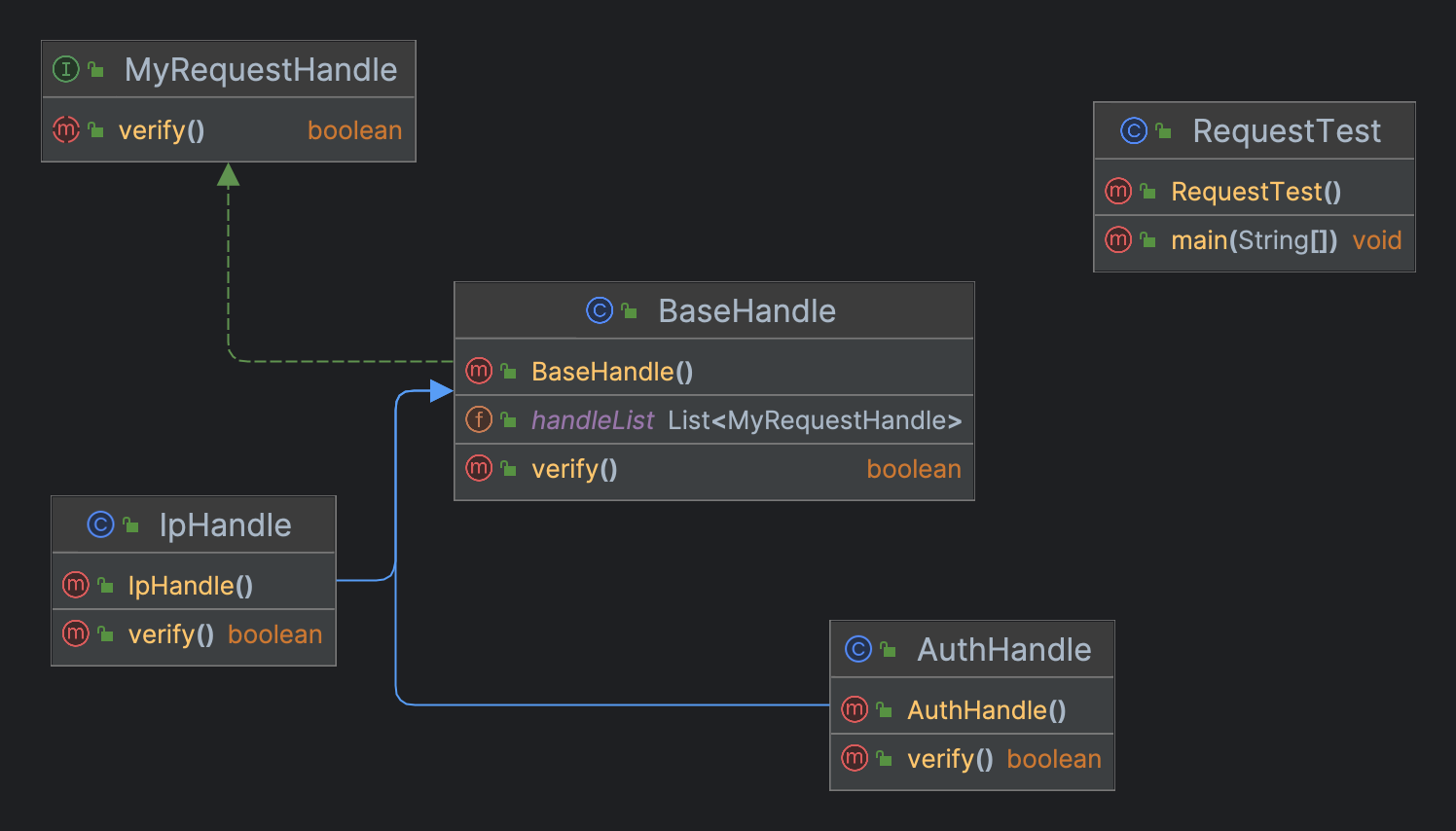定义
将请求沿着处理者链进行发送,收到请求后,每个处理者均可对请求进行处理,或将其传递给链上的下个处理者
真实世界类比
访问一个秘密基地 当去访问一个秘密基地时,一路上你会遇到很多关卡,每一个关卡都会核验你的身份信息和权限,只要有一个关卡不让通行,你就将停止前行。
场景
当一个请求打过来的时候,希望你对该请求进行验证
- 会有不同的验证规则
- 当不符合某一个规则时,即失败
- 便于以后扩展
类图
实现
MyRequestHandle
1
2
3
4
public interface MyRequestHandle {
boolean verify();
}
BaseHandle
1
2
3
4
5
6
7
8
9
10
11
12
13
14
15
16
17
18
public class BaseHandle implements MyRequestHandle {
public static List<MyRequestHandle> handleList = Arrays.asList(
new AuthHandle(),
new IpHandle()
);
@Override
public boolean verify() {
for (MyRequestHandle myRequestHandle : handleList) {
if (!myRequestHandle.verify()) {
return false;
}
}
return true;
}
}
AuthHandle & IpHandle
1
2
3
4
5
6
7
8
9
10
11
12
13
14
15
16
17
public class AuthHandle extends BaseHandle {
@Override
public boolean verify() {
System.out.println("AuthHandle verify start....");
return false;
}
}
public class IpHandle extends BaseHandle {
@Override
public boolean verify() {
System.out.println("IpHandle verify start...");
return true;
}
}
Client(客户端)
1
2
3
4
5
6
7
8
9
10
11
12
13
public class RequestTest {
public static void main(String[] args) {
BaseHandle baseHandle = new BaseHandle();
if (!baseHandle.verify()) {
System.out.println("verify fail...");
return;
}
System.out.println("verify success...");
}
}
适用场景
- 当必须按顺序执行多个处理者时,可以使用该模式。
特点
- 优点
- 你可以控制请求处理的顺序
- 单一职责原则。你可对发起操作和执行操作的类进行解耦
- 开闭原则。 你无需对上下文进行修改就能够引入新的策略
- 缺点
- 部分请求可能未被处理。
参考:《Head First 设计模式》

